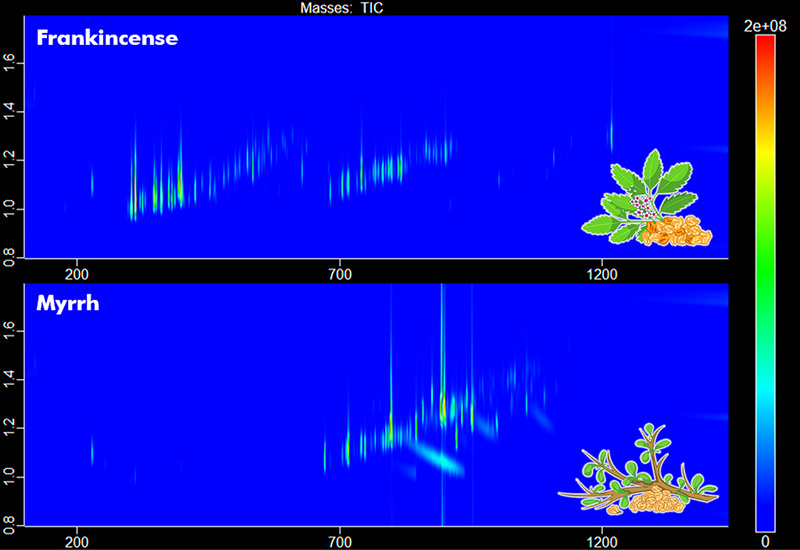
Frankincense and myrrh are both aromatic tree resins. Frankincense comes from the boswellia tree, and myrrh is a product of the commiphora tree. They have been used in perfumes and incense for thousands of years. Both resins can be dissolved into essential oils, making them ideal subjects for GCxGC-TOFMS examinations.

When the chromatograms of these substances are compared, it is immediately obvious to even a layperson that they are, in fact, very different. However, a skilled mass spectrometrist can recognize an abundance of terpenes in myrrh at just a glance, and furanosesquiterpanoids in frankincense that are not present in myrrh.
Listen to Liz Humston-Fulmer, an Application Chemist at LECO, give a short video introduction to how GCxGC chromatograms such as these two above can be read like a map, making it easier to identify different types of samples and what sets them apart.




